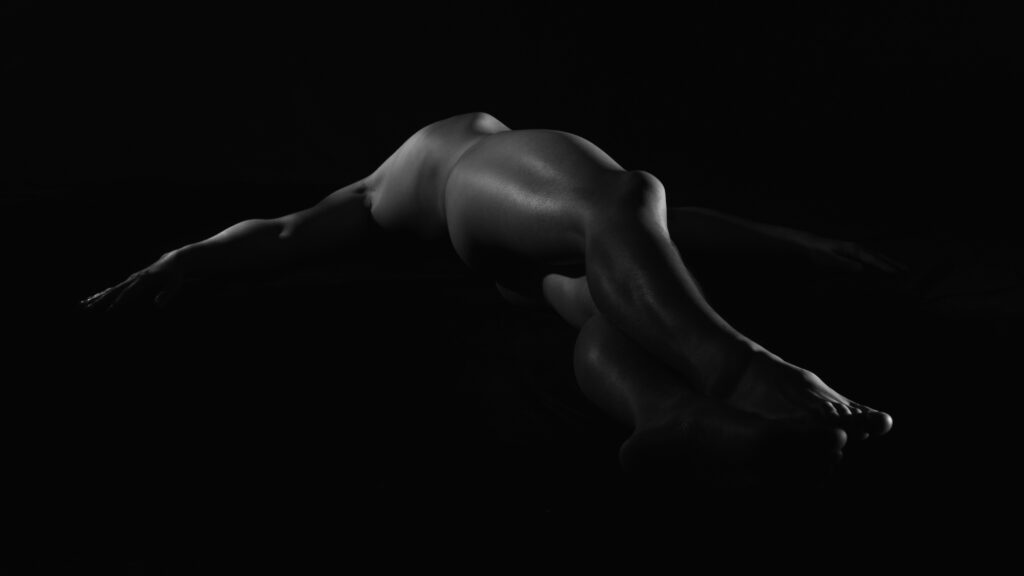‘I have very specific requirements for how to “frame” my own work. I want to control the audience’s experience. This is my public rejection of audience engagement. The viewer can only see the parts I want them to see, and this “compulsory acceptance” of seeing is my understanding of art. Each material has its own concrete logic, which often matches the “subject”, and the proposition of the “subject” usually swings back and forth between “abstract” and “concrete”.’ ─ Yan Xing

Yan Xing, “The History of Fugue”, 2012, Film Still | Image courtesy of the artist and Sunpride Foundation
Born in 1986 in Chongqing, China, Yan Xing is self-proclaimed as “exhibition-based” artist, integrating performance, images, photography and installation as his creative form. Xing graduated from the Oil Painting Department of Sichuan Fine Arts Institute in 2009 and won the Best Young Artist Award by Chinese Contemporary Art Award (CCAA) in 2012. Most of his current works are exhibition-based, presenting in well-known arts institutions, including Contemporary Arts Museum Houston, Ullens Center for Contemporary Art, Beijing and Indonesia National Gallery. His work has been collected by Rubell Family Collection, Miami, M+ Museum for Visual Culture, Hong Kong, Kadist Art Foundation, Paris and among others.
Voyeurism became an important element of artistic creation
Xing’s artistic creation focuses on the exploration of peeping and our desire to spy on the lives of others. In his video work, he excels at using the camera to capture every moment of the protagonist, or by the narrative way, the protagonist’s intentional or unintentional disclosure of personal memories through the writing process. “Daddy Project” is one of his well-known works.

Yan Xing, “Daddy Project”, 2011 | Image courtesy of the artist
During the cold spring in Beijing in 2011, Xing was on the grassy ground with his back to the audience, telling his story of violence, betrayal and hurt after his father was imprisoned. The mother kept meeting different boyfriends and the father’s relatives and friends ignored Xing. Later, Xing found that his father in prison was not his biological father. In the fragment of the memory of finding his “father”, Xing muttered to himself, complaining about the scars brought to him by his original family. At the same time, he tried to vent your emotions and liberate yourself. The audience facing Xing’s back are not able to see his facial expression. They can only judge his emotions from the change of tone and subtle movements, like spying on other people’s lives.

Yan Xing, “They Are Not Here”, 2010 | Image courtesy of the artist
In the early period, Xing’s work “They Are Not Here” more bluntly magnified the act of snooping under the camera. Seven young men were locked in a hotel room for about a hour. In the footage, the audience (the voyeurs), who expected to see something happened, merely saw the boring process of nothing happening to the young men and finally ended up with disappointment.
A work salutes to Robert Mapplethorpe
Xing’s work “The History of Fugue” (2012), a 5:30” video art installation, presented in the exhibition “Spectrosynthesis II” at the Bangkok Art and Culture Centre in 2019. The images represent the body silently flowing in black and white, blurring the boundaries between realism and posing, video and photography.

Yan Xing, “The History of Fugue”, 2012, Film Still | Image courtesy of the artist and Sunpride Foundation
Those body postures refer to the seven classic works by Robert Mapplethorpe, the American master of photography. Xing pays tribute to him by the movements represented in his photographs. Through this dynamic video, Xing also backtraces to the exploration of theory.


